OCKBROOK WALK
THE WALK
A popular and enjoyable walk on the edge of Derby, along quiet country lanes, through fields and woodlands, with a short tour of Dale Abbey, a well-preserved Hermit’s Cave and views of the Cat and Fiddle Windmill to add variety.
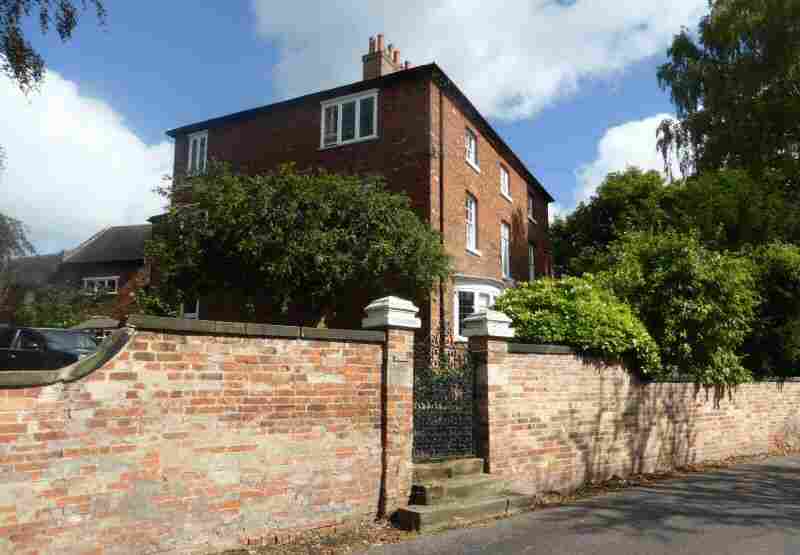
LOOK OUT FOR ON OCKBROOK WALK
Route Point 2 – Far Lane judging by the ancient hedgerows along its upper reaches indicates that the lane is very ancient and may have connected with the Portway, an ancient prehistoric trackway. An Archaeological Project Information Board provides details about a project, carried out on land at Little Hay Grange. The excavation site is on private land. In the early 1990s, a team of local archaeologists excavated at Little Hay a substantial stone building, of at least two phases of construction, which appears to have been built in the late 1st century AD. The building seems to have been built on an infilled ditch of an Iron Age settlement.
Point 4 – Parts of All Saints Church at Dale Abbey date back to 1150, when the hermit started to build his chapel and house on the site. This is the reason why the church is the only one in England to share its roof with a farm. At one time it shared it with the abbey infirmary and later with the Bluebell Inn when the connecting door from the church was said to lead from ‘salvation to damnation’. The church is very unusual and nothing seems to quite fit, which is part of its charm. Despite its diminutive size, it has reputedly the largest chalice in England; the Jacobean cupboard which is used as a communion table is in front of the reading desk instead of behind it. The pulpit leans at a sharp angle and it is possible to sit in one of the box pews with your back to the minister! Services are held regularly on Sunday afternoons to which visitors are welcome.
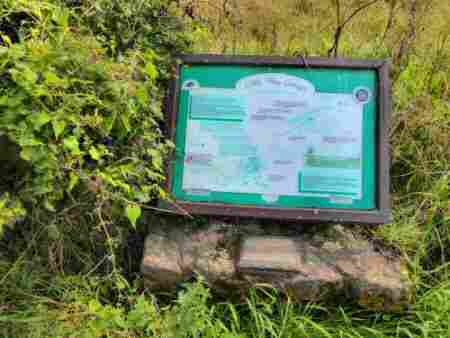
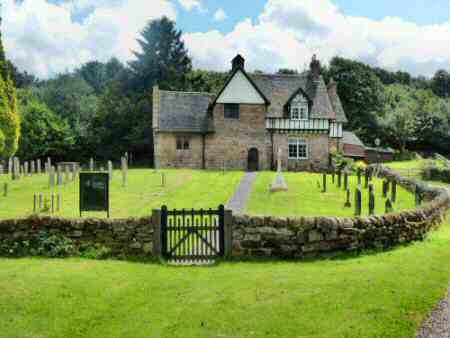
Point 5 – A more peaceful and pleasant spot than Dale Abbey is hard to find in the whole of Derbyshire. Yet it is less than three miles from the suburbs of Derby to the west, and even closer to a vast area of housing and industrialisation on the eastern side. The story of Dale Abbey, or Depedale as it was originally known, begins when a Derby baker had a dream – the Virgin Mary appeared and told him to go to Depedale, to live a life of solitude and prayer. At that time it was a wild and marshy place and the hermit carved out a home and chapel in a sandstone cliff. Here he continued to worship in solitude until one day the smoke from his fire was seen by a Knight, Ralph Fitz Geremund the owner of the land. Intending to drive the intruder away, he rode over, but on hearing the hermit’s story he was filled with compassion, allowing him to remain and bestowing on him the tithe money from Borrowash Mill. This enabled the hermit to build a small chapel and home on the site of the present church.
Point 6 – After the hermit’s death, word spread of the religious significance of the place and following several attempts, Dale Abbey was founded in about 1200 by an order known as the White Canons because of the colour of their habits. The abbey remained until 1538 when it was dissolved and the greater part demolished by the command of Henry VIII. The stone from the abbey was eagerly seized by local builders. Little but the great 13th-century east window remains, which probably has much to do with the ancient belief that if the arch fell the villagers would have to pay tithes. Today the abbey ruins are designated as an ancient monument.
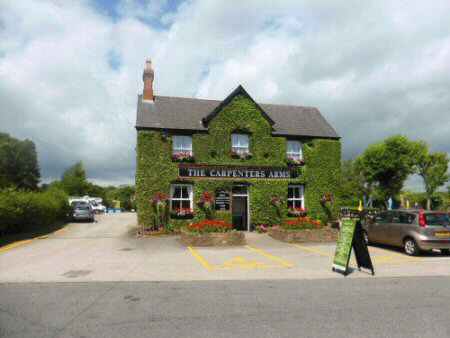
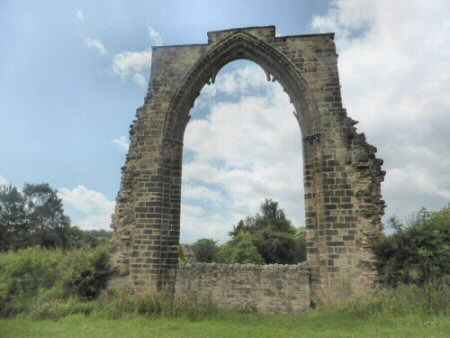
Point 7 – Hermit’s Wood is an ancient woodland and probably formed part of the original forest that once covered this area. It contains many fine beech and oak trees. Abundant wildlife and over 60 species of flowering plants have been recorded. The Hermit’s Cave is now designated as a Scheduled Ancient Monument, and it is worth taking a good look at the view from this point. On the hill to the north can be seen the Cat and Fiddle Windmill, the only one of its kind left in Derbyshire.
Point 11 – Hopwell Hall was built by Henry Keynes in 1720. The fine house survived until 1957 when it was demolished following a fire which destroyed the upper storey. The site was then sold to Nottinghamshire County Council, who built a school upon it. The school was eventually closed and the property is now a private residence.
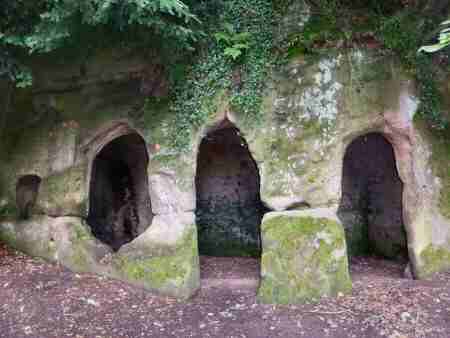
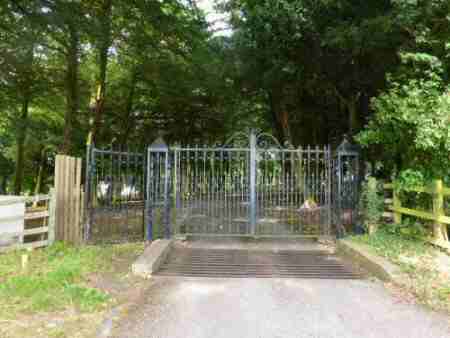
OCKBROOK WALK DETAILS
Length: 6 miles.
Start: Between A52 and A6005 one mile to the east of Spondon. There is roadside parking available along The Ridings, on the eastern side of Ockbrook to the north of Far Lane (SK427363).
Terrain: Mostly meadowland, quiet country lanes and access tracks, with one short steep climb at Dale Abbey.
OCKBROOK WALK ROUTE
- From the northern end of The Ridings, walk down the road and turn left into Far Lane, passing Littlehay Grange on the right and Little London on the left, after about three-quarters of a mile.
2. Continue along the lane, which soon changes into a rough track. Near the end of the track, you pass an Archaeological Project Information Board and enter a large field, turn sharp left, and follow the hedge along up the hillside. Ignore the path on the left, near the top corner of the field.
3. On reaching the top left-hand corner of the field, turn right and follow the hedge to a stile/gap in the opposite corner. Continue to keep close to the hedge on the left for a short distance in the next field, before going through a gap into Ockbrook Wood.
4. Remain on the right-hand side of the wood at first, before dropping down a rough path. At a path indicator post, go to the right to leave the wood by a gate. The path then bends to the left to reach another gate. From this point continue forward, along a diversionary footpath, which has been introduced to avoid going through a stable yard (now private). Walk past All Saints Church, and go through a stile by a gate. The track soon starts to rise gently and bends to the left past Abbey House.
5. At a small roundabout, turn sharp right up the main street of Dale Abbey and turn right again at the top of the street. About 100 yards after passing the village school, turn right over a stile and then immediately right again to go over another stile a few yards away.
6. Turn left and angle across the field towards the ruined arch of the former Abbey. Pass in front of the arch and follow the hedge round to the right to reach the track you used previously.
7. Turn left along the track and follow it past the church and attached house, do not go through the gate in front of you that you used previously, but turn sharp left. Follow the path along, ignoring two sets of stepped paths on your right. About 100 yards after passing the Hermitage Wood sign turn right to the sign for the Hermit’s Cave. Walk up the stepped path to the Hermit’s Cave. Then ascend a long steep flight of steps to the left of the cave up to the edge of the wood, where you turn left.
8. Within 20 yards, go up a short series of steps leading out of the wood into a field. Then from the edge of the wood angle to the left to a gap in the hedge opposite, about 85 yards from the top corner of the field.
9. Continue for about 20 yards to the right and then about the same distance to the left, before angling towards a gate and stile near the bottom corner of the field. In the next field*, in order to follow the right of way, walk towards Boyah Grange, but on reaching a stile into the farmyard turn round without crossing the stile and face in the opposite direction and walk across the field to a stile. (*Many walkers, turn left and angle slightly to the right past an electricity pole to reach a stile onto a minor road – this might be the best option for all concerned when the grass is high).
10. On reaching a minor road turn right, where the road bends sharply to the left, and continue forward down an access road. After a few yards where the road bends sharply to the right, continue straight ahead through a stile by a gate leading down a fenced bridal track.
11. Remain on the fenced track to pass Keys Farm, on your left. Follow the farm access track as it gently ascends, until after passing an area of woodland, with a cattle grid directly in front of you. Here you go to the right along a surfaced path that winds its way along behind Hopwell Hall.
12. Opposite the hall buildings, turn right down a wide, partly grassed track. Pass Hopwell Nook Cottage and follow the surfaced track to Ockbrook. On reaching the village, turn right along The Ridings back to the start of the walk
